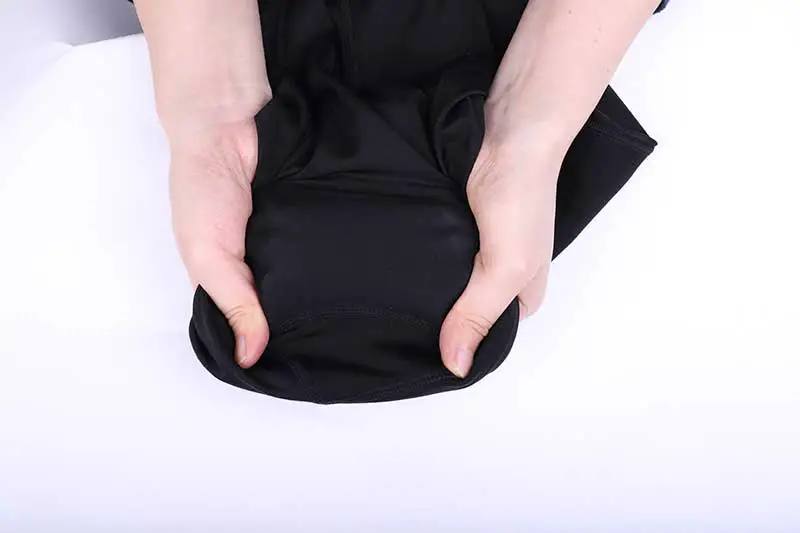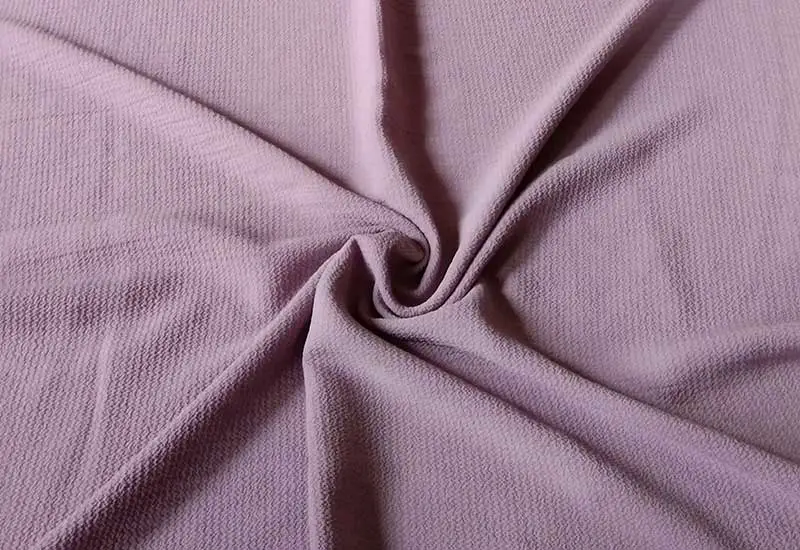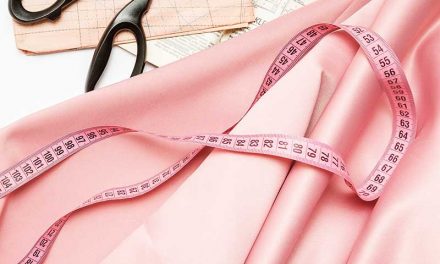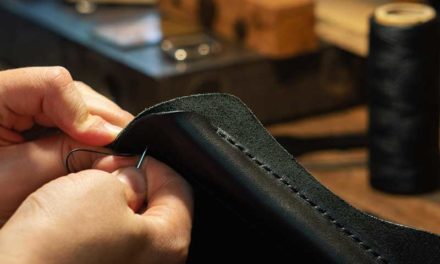If you are looking for a comfortable item of clothing that is also fitted, you won’t go far wrong with choosing stretchy fabric. It is, however, quite difficult to sew because it moves and slides easily. To get the best results, we are here to give you some pointers.
Table of Contents
How to Prepare Stretchy Fabric for Sewing
To make sure that your material won’t shrink or fade, it is a good idea to prewash stretchy fabric before sewing. First, check what temperature you should be washing the fabric at. You don’t want to wash it on too high a heat which will inevitably shrink the material. Also, check if the material should be dry cleaned rather than washed.
If you find that your fabric is curling under the edges, spray it with a starch spray before sewing. This will help it to lay flat and the spray will come out when you first wash the garment. If you want, you can wash it before you wear it to get the stiffness out.
Cut the Fabric for Sewing
Once you have prepared your fabric, it is time to cut it. This can be quite difficult as it can slide about. Put the material on a flat surface and then pin the pattern to it. Paperweights can be an even better choice for holding down your fabric. When you start cutting, do it slowly and make sure not to pull the fabric as you may not get the right shape for your garment.
Choose the Needle
It is important to have the right needle if you are sewing stretchy fabric. If your material is loosely woven, choose a ballpoint needle. It comes in sizes from 10 US to 16US. The smaller the number, the finer the needle.
If you are sewing a tightly-woven garment the best needle to use would be a stretch needle. These needles come in sizes from 11US to 14US.
If you need a special size needle, go for the universal. It comes in sizes from 8US to 19US. A lower number indicates that it is fine, while a higher number means that it is thicker.
A double needle that produces a zig-zag stitch is great for hems. It both makes the seam secure and makes it look attractive.
Choose the Stitch Settings
The first setting to choose is the baste stitch. The baste stitch is the same as a tack stitch which you might use when hand sewing. It is a good idea to use the baste stitch on your sewing machine as stretchy material is so difficult to sew. It is easy to pull out the thread if you make a mistake with the baste stitch, unlike if you are only sewing the permanent stitch. You will need to choose the longest stitch length and then sew where you want the permanent stitches to go.
Once you have sewn the baste stitch, select the stretch stitch on your machine if it has one. Some older machines won’t have this setting. If it doesn’t have this stitch, use either the zig-zag stitch or the straight stitch. You will need to sew carefully with whatever setting you are using as these stitches are difficult to take out. The zig-zag stitch is probably better than the straight stitch as it both allows the fabric to stretch more easily as well as keeping the hems and seams tight and secure.
Some newer machines may have an overedge stitch setting which is also good for sewing stretchy material. It creates secure hems and seams.
When it comes to sewing the fabric use a setting stitch between 0.09 and 0.11 inches. This is for whatever stitch type you are doing. A longer stitch length is the best as it creates slack in the fabric.
You may have an advanced sewing machine that has both a stretch stitch setting and a digital interface. If so, your machine should choose the most suitable stitch length by itself.
Tips for Sewing Stretchy Fabric

You may want to pin your fabric before you start sewing it. The best pins to use are ballpoint pins because they have the ability of fitting in-between the fibers of stretchy material. Insert them at an angle of 90 degrees to the seam. This makes them easy to take out.
If you are making a t-shirt or blouse, it is a good idea to put a piece of stabilizing fabric underneath the seams of the shoulders as shoulders do have a habit of drooping. You will need the material to be light and not stretchy. Cut a piece about 0.75 inches wide and the length you need to cover the seam. Cotton is a good choice of fabric for this.
Your sewing machine may pull at your fabric, so it is a good idea to sew in the least stretchy direction if you can. Try pulling your fabric in different places to decide which direction is the least stretchy.
If the fabric doesn’t move through the machine properly, put a piece of tissue paper underneath it. The tissue paper will come off easily when you have finished sewing.
It is a good idea to gently hold the fabric as you sew. Make sure that it’s flat and not stretched out. You will want the feed dogs to allow the fabric to go underneath the pressure foot.
When you have finished sewing the garment you might want to invigorate your garment with either a fabric steamer or a steam iron. If you are worried about burning your new garment place something underneath it while you steam, such as a T-towel.
Conclusion
Stretchy material isn’t the easiest to sew, but with a little practice, you should master it. It’s a good idea to practice on a piece of stretchy material before making the real thing. Just remember to go slow and easy and you should master it. You will be able to make figure-hugging clothes such as leggings and evening dresses with ease.





